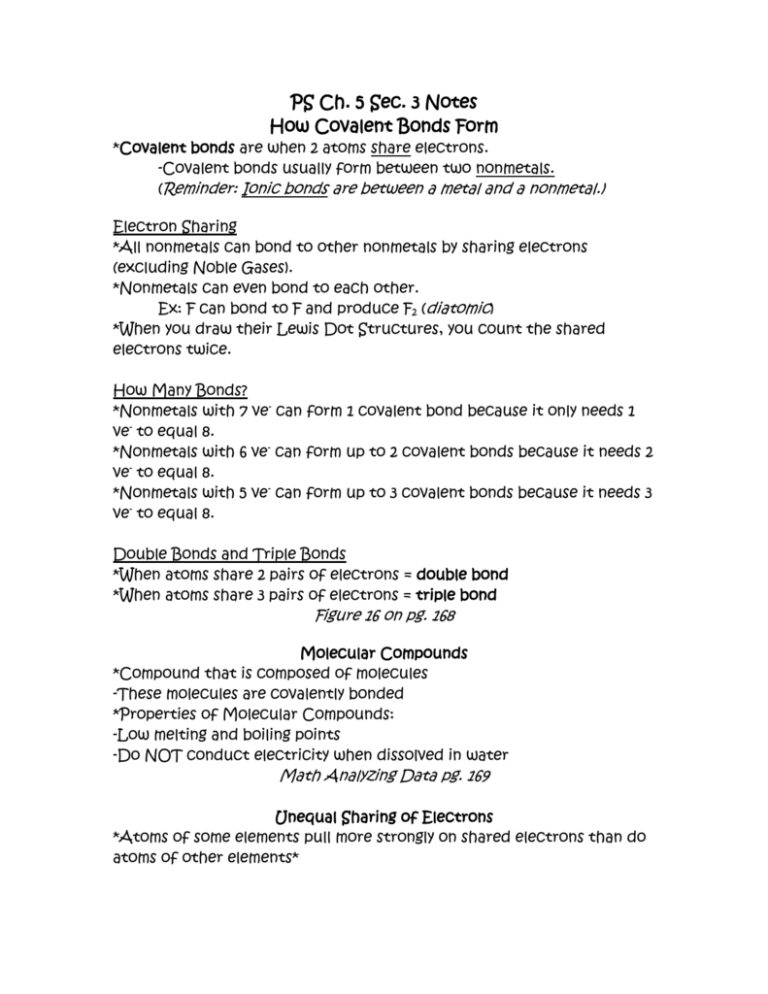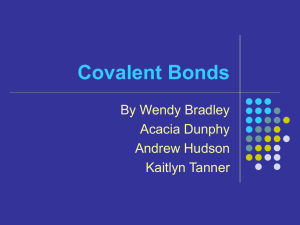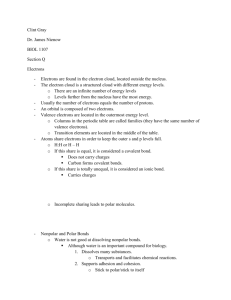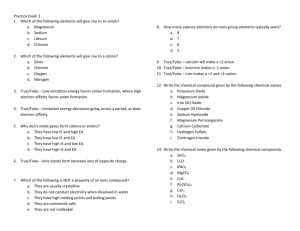Section 3: Covalent Bonds
advertisement

PS Ch. 5 Sec. 3 Notes How Covalent Bonds Form *Covalent bonds are when 2 atoms share electrons. -Covalent bonds usually form between two nonmetals. (Reminder: Ionic bonds are between a metal and a nonmetal.) Electron Sharing *All nonmetals can bond to other nonmetals by sharing electrons (excluding Noble Gases). *Nonmetals can even bond to each other. Ex: F can bond to F and produce F2 (diatomic) *When you draw their Lewis Dot Structures, you count the shared electrons twice. How Many Bonds? *Nonmetals with 7 ve- can form 1 covalent bond because it only needs 1 ve- to equal 8. *Nonmetals with 6 ve- can form up to 2 covalent bonds because it needs 2 ve- to equal 8. *Nonmetals with 5 ve- can form up to 3 covalent bonds because it needs 3 ve- to equal 8. Double Bonds and Triple Bonds *When atoms share 2 pairs of electrons = double bond *When atoms share 3 pairs of electrons = triple bond Figure 16 on pg. 168 Molecular Compounds *Compound that is composed of molecules -These molecules are covalently bonded *Properties of Molecular Compounds: -Low melting and boiling points -Do NOT conduct electricity when dissolved in water Math Analyzing Data pg. 169 Unequal Sharing of Electrons *Atoms of some elements pull more strongly on shared electrons than do atoms of other elements* -In this case, electrons are pulled closer to 1 atom causing a slight electrical charge. *Not as strong as ion charges Polar Bonds and Nonpolar Bonds *The atom that has the stronger pull on electrons will result in a negative charge *The weaker pull will result in a positive charge *Polar Bond: covalent bond where electrons are shared unequally *Nonpolar Bond: covalent bond where electrons are shared equally Attractions Between Molecules *The negative ends of polar molecules attract the positive ends of polar molecules. Ex: H2O molecules *In contrast, there is little attraction between nonpolar molecules Ex: CO2





